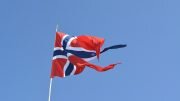babyMore children come at a cost to Norway
A Statistics Norway (SSB) researcher believes that Erna Solberg is wrong about the statement that more children are the solution for the welfare state Norway and points out that the average Norwegian constitutes an expenditure for the state.
“If we do not address the shortage of children, there will be a shortage of labour in elderly care and more difficult to finance the Norwegian welfare schemes,” Prime Minister Erna Solberg opinionated in her New Year’s speech. That argument is not one Researcher in Statistics Norway (SSB), Erling Holmøy, agrees to, writes the financial newspaper Dagens Næringsliv.
Holmøy has led the work on a report which is being finalised by Statistics Norway, commissioned by Solberg’s Government through the Ministry of Children and Equality. Because the report is not yet approved internally, Holmøy does not want to conclude – but says that it is not certain that Solberg’s plan will work the way she wishes.
Statistics Norway’s calculations show that if Norwegian women give birth to more children, then more people will have to be supported for a period of 65 years.
Financing of the welfare state
He points to three important issues: more children lead to more that need support, the «oil fund» (pension fund) must be shared among more, and Norwegians are public expenditure items.
“The use of so-called «oil money» in line with the fiscal rule covers far from the entire unpaid tax bill that Norwegians leave behind when they die. Therefore, one should be sceptical of claims that more births will facilitate the financing of the welfare state in the long term,” Holmøy tells the newspaper.
“Since the 1960s, the number of childbirths in Norway has decreased. The Government is concerned with the fact that the birth rates are now at a record low and wants to know what consequences this will have for Norway. That is one of the reasons why we have ordered this report,” writes the Minister of Children and Equality, Monica Helleland, in an email to NTB.
The family is important
Helleland emphasises that she has not received the report yet and that she, therefore, has no basis for commenting on its content.
“Increasing the number of childbirths will not solve the welfare state’s challenges alone, but it is a long way away from to stating that more childbirths are not sustainable. If you draw Holmøy’s argumentation far enough, you can say that the most profitable for Norway is that we have no population at all; and that we in the world’s richest country cannot afford to give birth at all.
A sustainable welfare society can not only be measured by these parameters,” Helleland counters.
“It concerns workforce, about the resources the next generation can contribute, and also that the family is often the most important in people’s lives,” she adds.
Last year’s total birth rate of 56,300 was the lowest in many years. This resulted in a total fertility rate of 1.62 children per woman – the lowest measured in Norway ever. The last time the figure was almost as low was in 1984 when the fertility rate was 1.66. Since 1975, the figure has been below 2, but in 1975 and 2009 the figure was up to 1.98.
Waits too long
The Cabinet Minister, in May last year, told NTB that she was concerned that many were waiting too long before having children. The average age of women who bear their first child is now at 29.3 years. That is one year more than it was only ten years ago. In Oslo, the average age of first-time mothers is 31.1 years.
“I think it is food for thought that Norwegians are waiting ever longer before having children. We know that the older you get, the harder it is to get pregnant,” Helleland concludes.
The birth figures for 2018 are not ready until March, but in the first three quarters of last year, 42,782 children were born in Norway. The year before, when the number of births was at a record low, the corresponding numbers at the end of September were 43,890 children born.
The record year in Norway is 1946 with 70,727 births, coinciding with the end of WW II, while rock bottom was reached in 1983 with 49,937 children born. Due to immigration and length of life, the total number of Norwegians is, however, still on the rise.
© NTB Scanpix / #Norway Today




